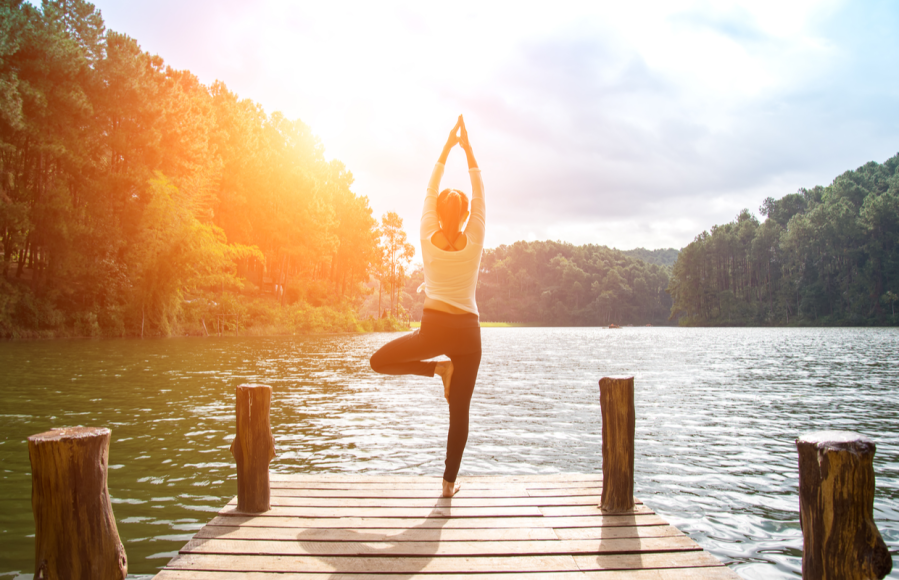Are you thinking about your balance right now? Chances are, you’re not. But it’s working hard all the time to keep you upright and free from harm. Learn how to improve your balance now so you can reap the benefits in later life…
We use our balance all the time. Just walking from one place to another needs several different systems to be working together, to make sure we don’t fall over or bang into obstacles.
‘Balance allows us to move,’ says Lyndsay Hirst, physiotherapist and founder of Your Pilates Physio. ‘If you start to lose it for any reason, whether that’s age or illness, it can have a huge impact on the whole body.’
It makes sense to do what we can to build up our ability to balance, to protect our bodies now and in later life.
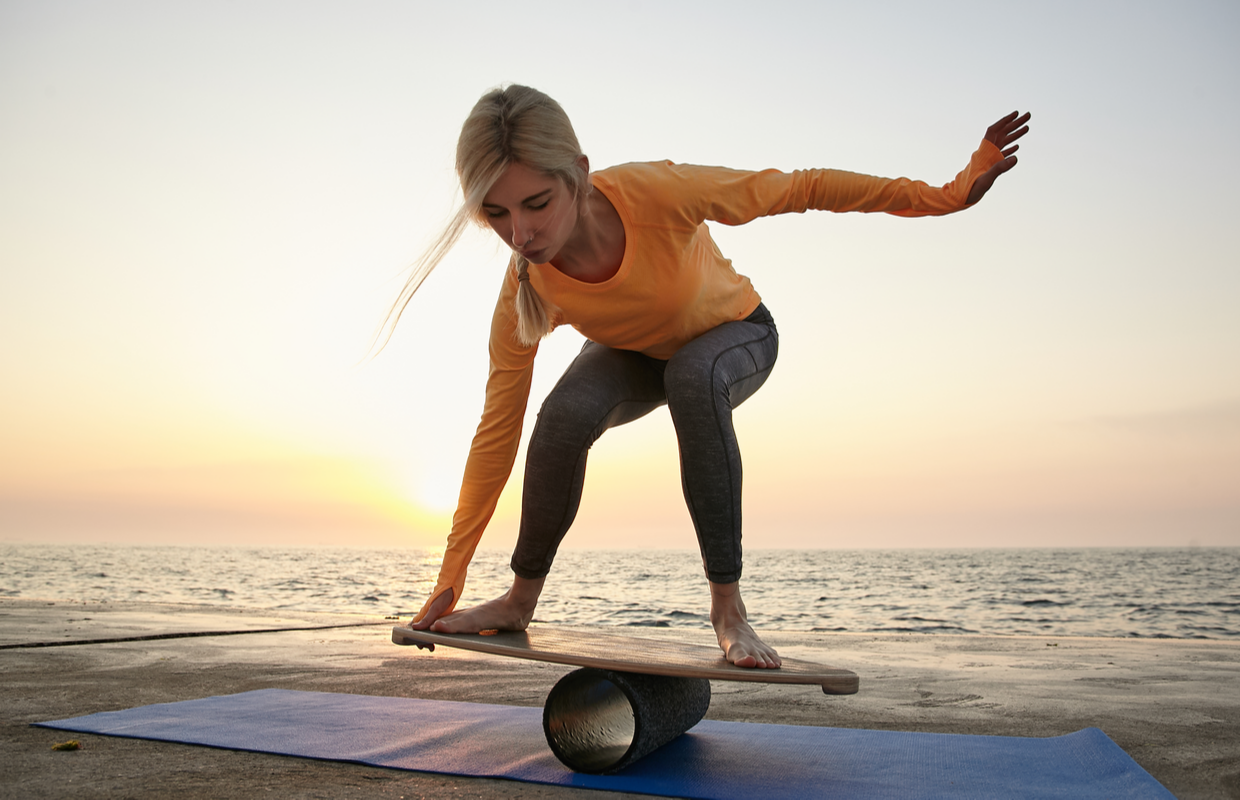
The biology of balancing
So how do we stay balanced? There are three key factors in play.
1. Your vision
Your sight has the biggest input in your balance. Need convincing? Try a quick exercise. Stand up – but just make sure you’ve got something stable nearby to grab if you start to wobble.
Now, balance on one foot. ‘If it’s hard, find a spot to focus your eyes on, so you’re not distracted by moving objects,’ says Jo Curran, Head of School of Pilates at Future Fit Training. Count how long you manage, then try again with your eyes closed. See the difference?
‘We naturally use our vision to give us this sense of where we are in space,’ says Lyndsey. We rely on the natural vertical and horizontal lines of our surroundings to work out if we’re upright – which is why some people can be affected by strong patterns on walls or floors.
2. Proprioception
This is your body’s awareness of where your joints are. ‘Within your joints, and the ligaments around them, you’ve got these little receptors that we call proprioceptors. And their job is to send messages to your brain, to tell it where your joint is and how fast it’s moving,’ explains Lyndsey.
3. Your vestibular system
This is what’s going on within your inner ear. ‘The fluid and tiny hairs in your inner ear work together to detect head position and movement,’ says Lyndsey. Change the position of your head and the fluid moves, moving the hairs, which send signals to your brain to register the shift.
Does age affect your balance?
It’s a simple fact that our balance gets worse as we get older. ‘It’s just the ageing process,’ explains Lyndsay. ‘It might be that your vision deteriorates. Or you get arthritis in your joints, which can dampen down the proprioception. Without the input saying where your knees, ankles or hips are, you’ll be more vulnerable to falls and injuries.’
Jo agrees. ‘We lose muscle mass as we age,’ she says. ‘And this can affect our strength and reaction ability should we lose our balance.’
Feeling a bit wobbly can make you less confident doing everyday tasks – even just walking – and that can have longer-lasting effects. ‘Moving less can ultimately lead to muscle weakness and joint stiffness,’ says Lyndsey.
So, it’s clear that maintaining and improving your balance is a good idea. ‘Balance training is beneficial to everyone,’ says Jo. Here’s how to improve your balance at home…
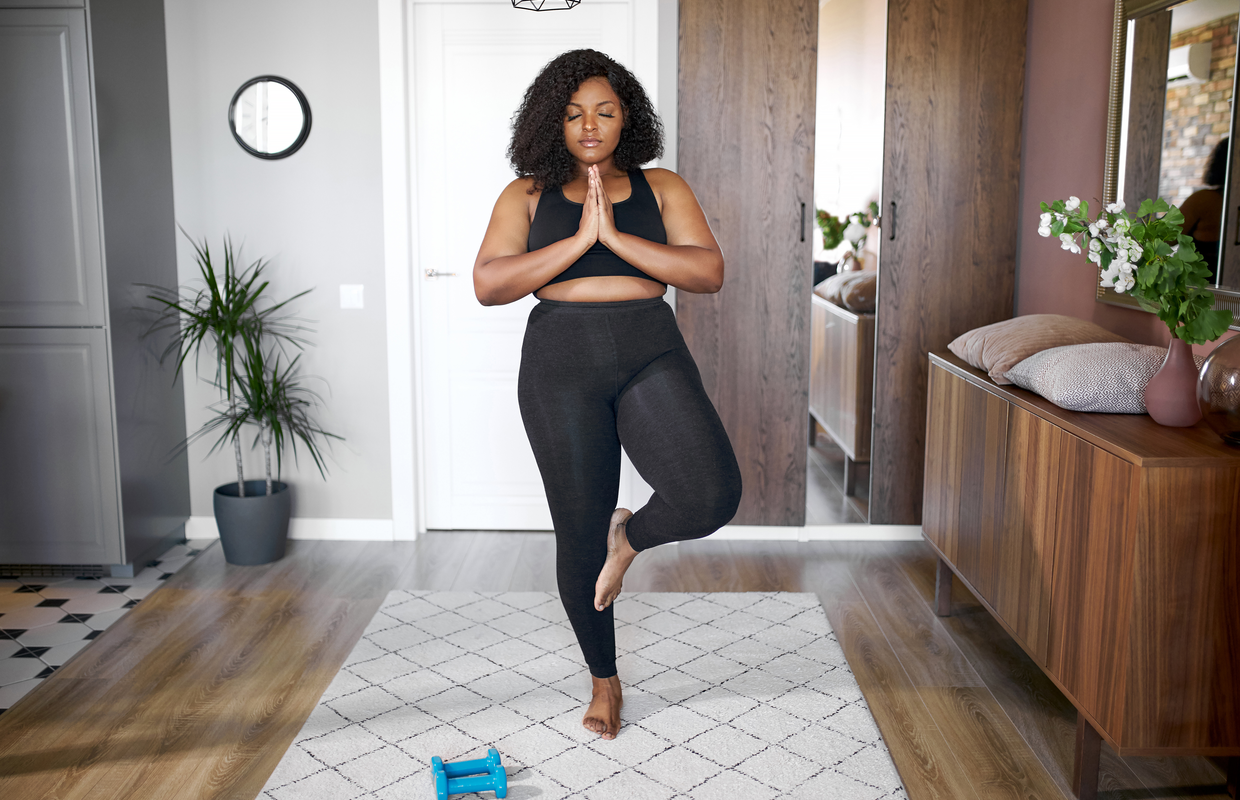
How to improve your balance
If you want to learn how to improve your balance, Jo recommends the following exercises:
- Incorporate simple balance exercises into your day-to-day routine. Why not try standing on one leg while brushing your teeth?
- Sit on a chair or stability ball, maintaining a neutral posture and engaging your core. Slowly hover one foot from the floor and then lower, alternating legs. Hold for longer as your balance develops.
- Include core-strengthening exercises when you work out, to help support your spine, improve posture and enhance stability within the body.
Once you’re feeling a bit more confident balancing on one leg, Lyndsey recommends challenging yourself in the following ways:
- Move your head side to side – it will stimulate your vestibular system.
- Try a single-leg knee dip, a sort of squat on one leg – it will get the joints moving and the muscles working.
- Stand on one leg, throwing a ball up and catching it.
- Try to reach forward a metre, to either side and backwards, just switching and moving your centre of gravity.
- Confuse your brain a little bit by doing times tables while you’re on one leg, or spelling your name backwards.
The good news is that you’ll see a difference in your balance very quickly. ‘Even just in a 30-minute session, I’ll see people improve,’ says Lyndsey. So why wait? If you’re looking for other ways to improve your balance, we also recommend trying Pilates…
Best exercises to improve your balance
You may not want to spend hours working on balancing drills when you could be getting a greater sweat on, but it’s worth the time investment. In fact, just a few simple exercises could bring about great fitness rewards. Why not try doing the following six-move circuit at the end of a gym or home training session? This will test your body’s ability to control itself. As an added bonus, it doubles up as a core workout, too!
How to do this circuit:
Follow the exercises in order, taking 45 seconds of rest between moves. As you get better at the moves, you can increase the number of sets to keep your body challenged.
Beginner: 1 set of 10 reps
Intermediate: 2 sets of 10 reps
Advanced: 3 sets of 10 reps
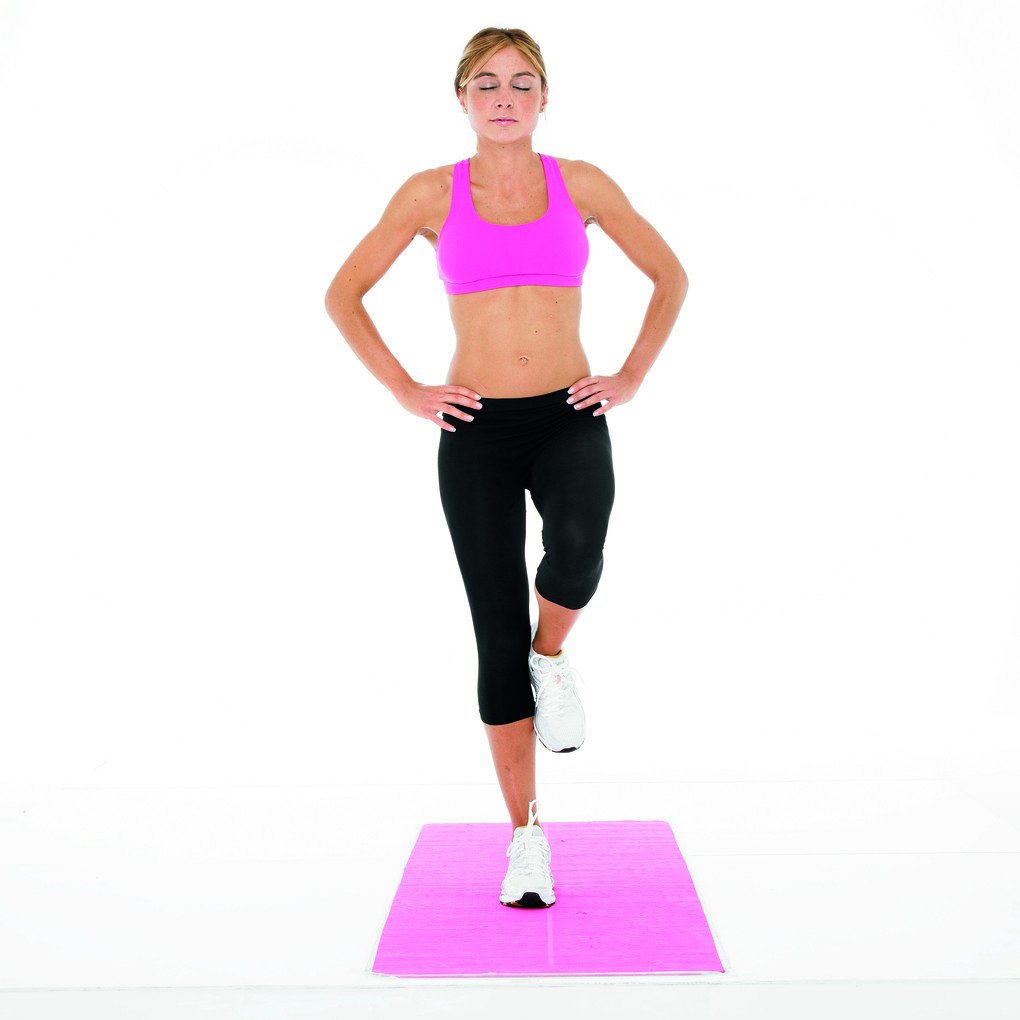
1. Flamingo
- Stand on your right leg and lift your left leg off the floor.
- Keep your eyes closed for 20 seconds at first, working up to one minute. Relax and repeat for set number of reps.
- Use your arms for balance but don’t hold onto anything. Repeat on your left leg.
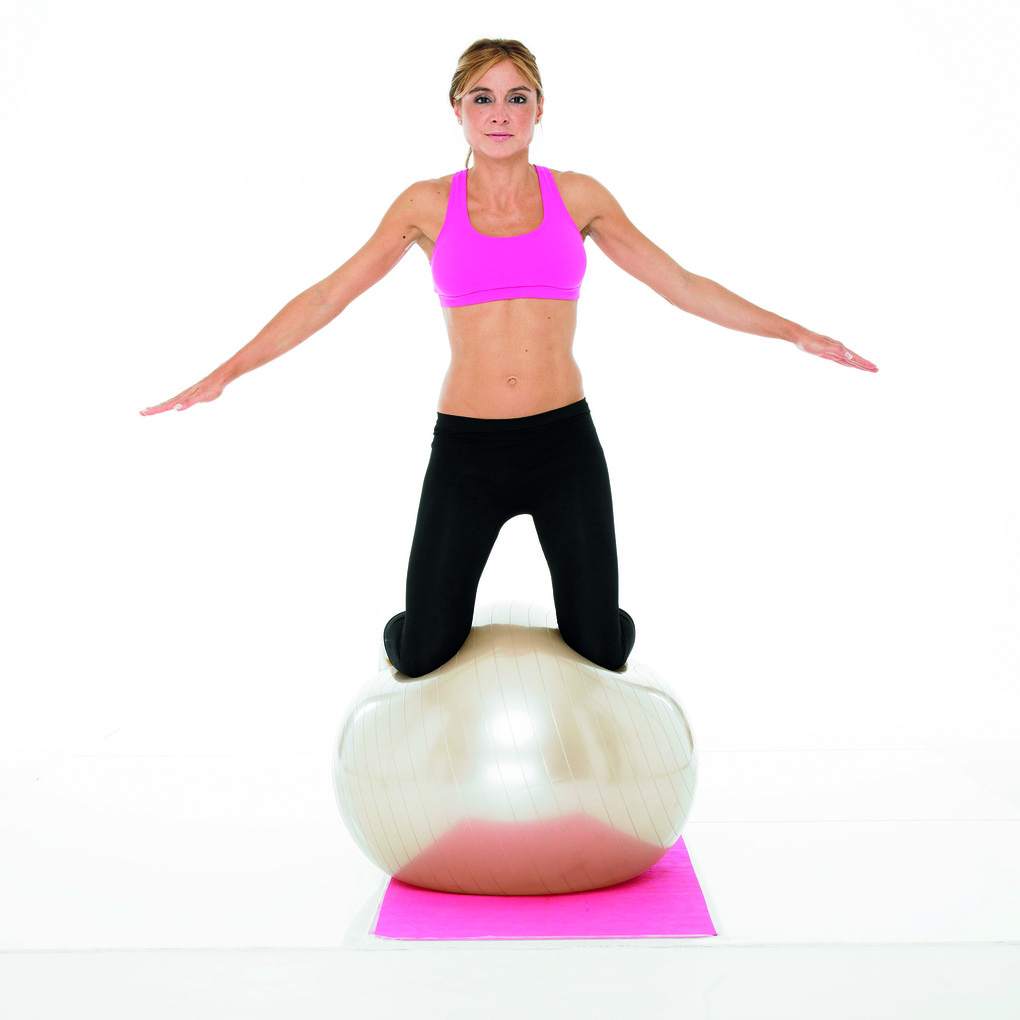
2. Stability ball kneel
- Stand behind a stability ball.
- Place your hands and knees on the ball.
- Roll the ball forward.
- Lift your hands off the ball.
- Balance for 5-10 seconds, relax and repeat for set number of reps.
Tip: Ensure that there is enough space to perform this exercise!
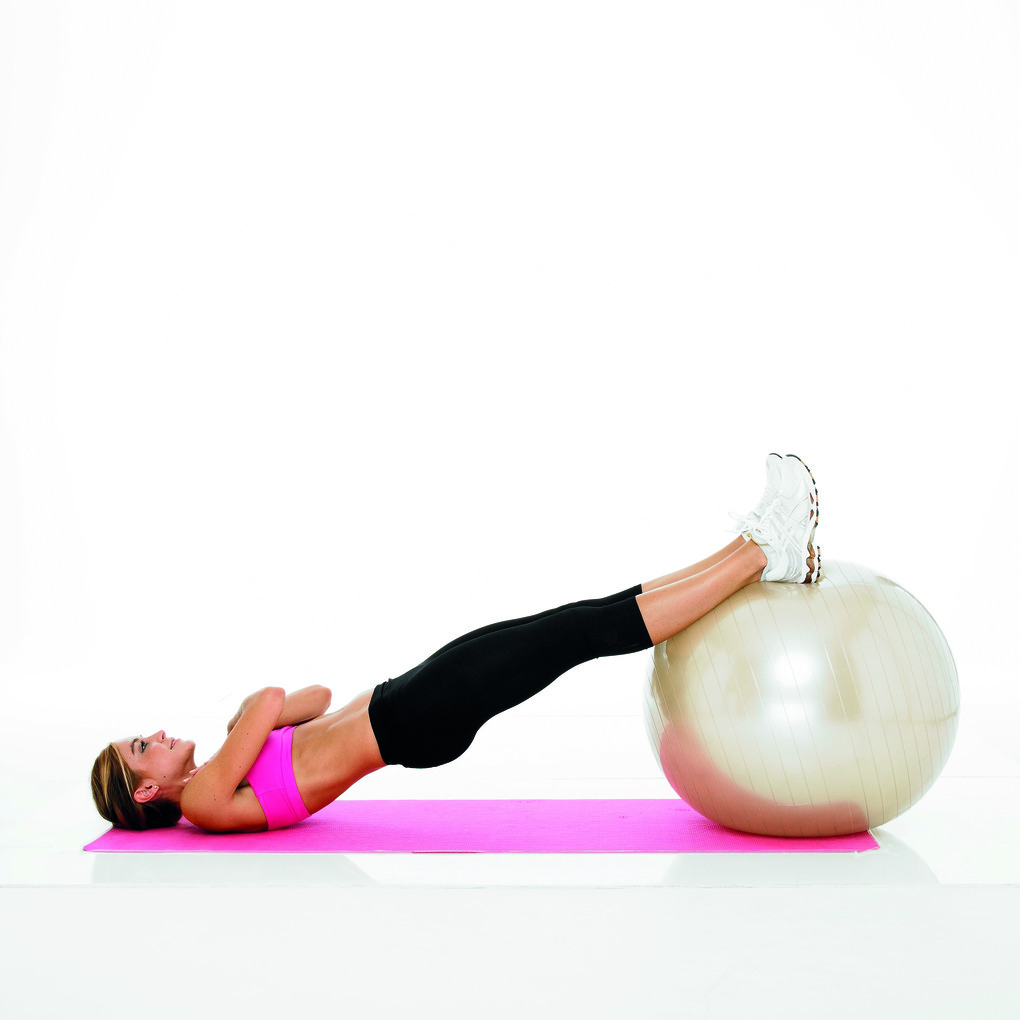
3. Stability ball bridge
- Lie on your back with your feet on a stability ball and your arms crossed over your chest.
- Lift your hips off the floor so you have a straight line between your feet and your shoulders.
- Keep your tummy tight and squeeze your bottom.
- Hold the position for 5 seconds, relax and repeat for set number of reps.
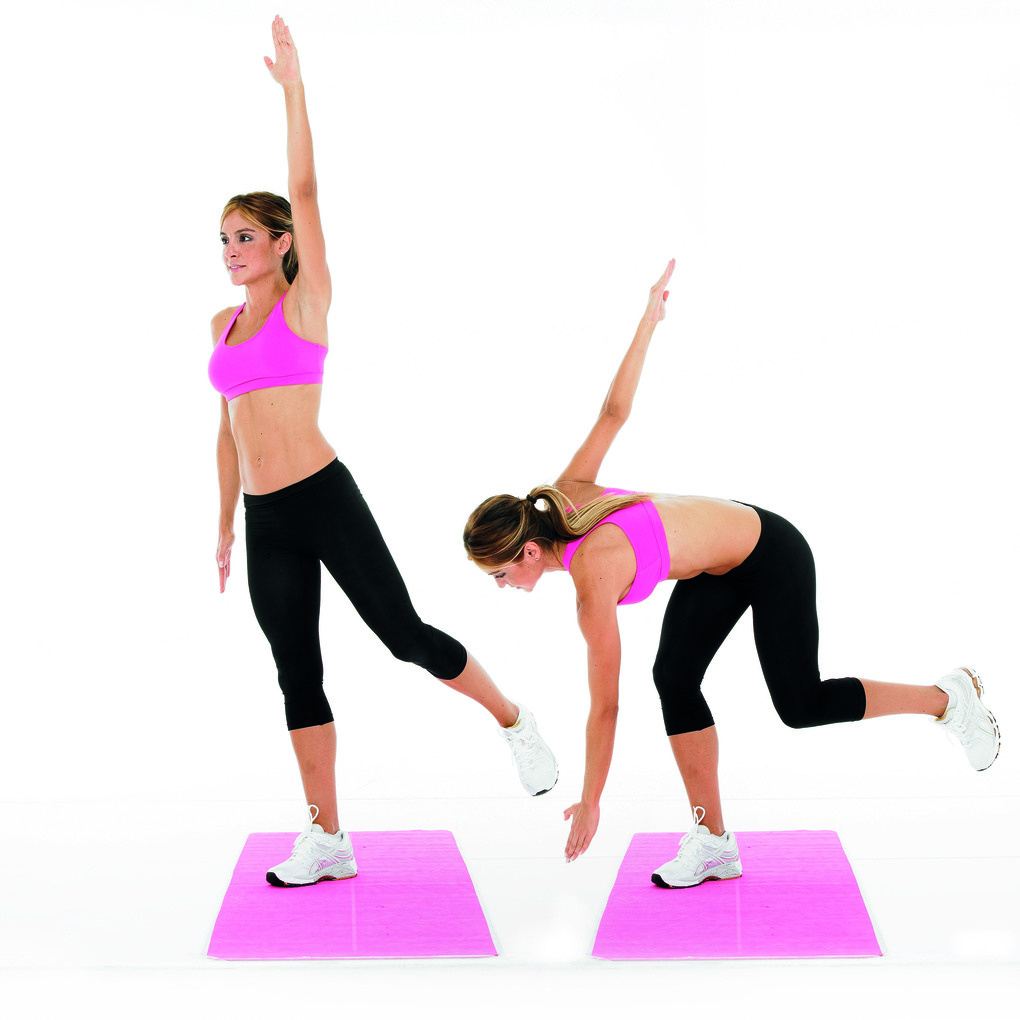
4. Woodchop
- Stand on your right leg. Extend your left arm up to the ceiling and your left leg out behind you. This is the start position.
- Bend your right knee, taking your left hand down and touching a point just to the outside of your right calf.
- Return to the start position. Complete set number of reps and repeat on other side.
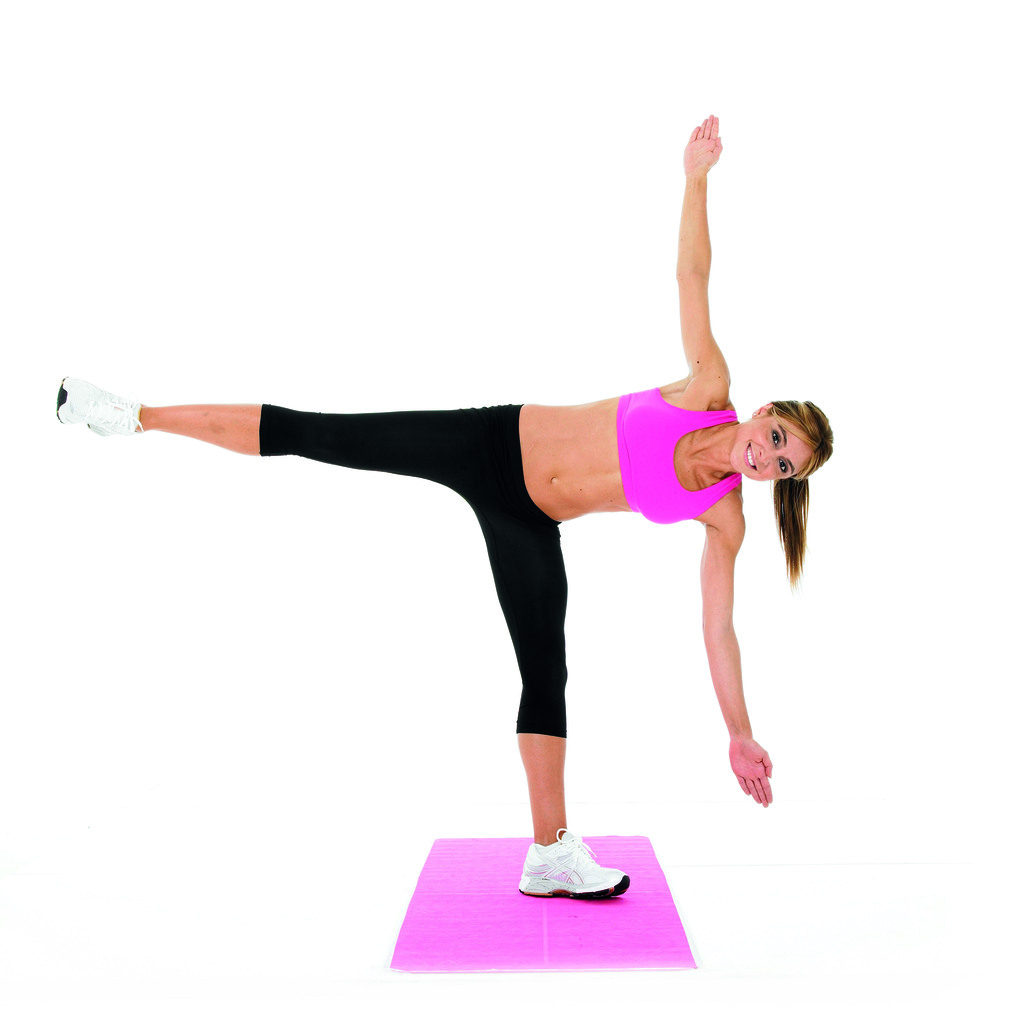
5. Star stance
- Stand up tall and place all your bodyweight on your left leg.
- Spread your arms sideways. This is the start position.
- Lift your right leg sideways off the floor to form a five-pointed star, with your left arm pointing towards the floor.
- Hold the position for 5 seconds.
- Return to the start position. Complete set number of reps and repeat on other side.
Tip: If you find this difficult at first, try doing it with your back against a wall.
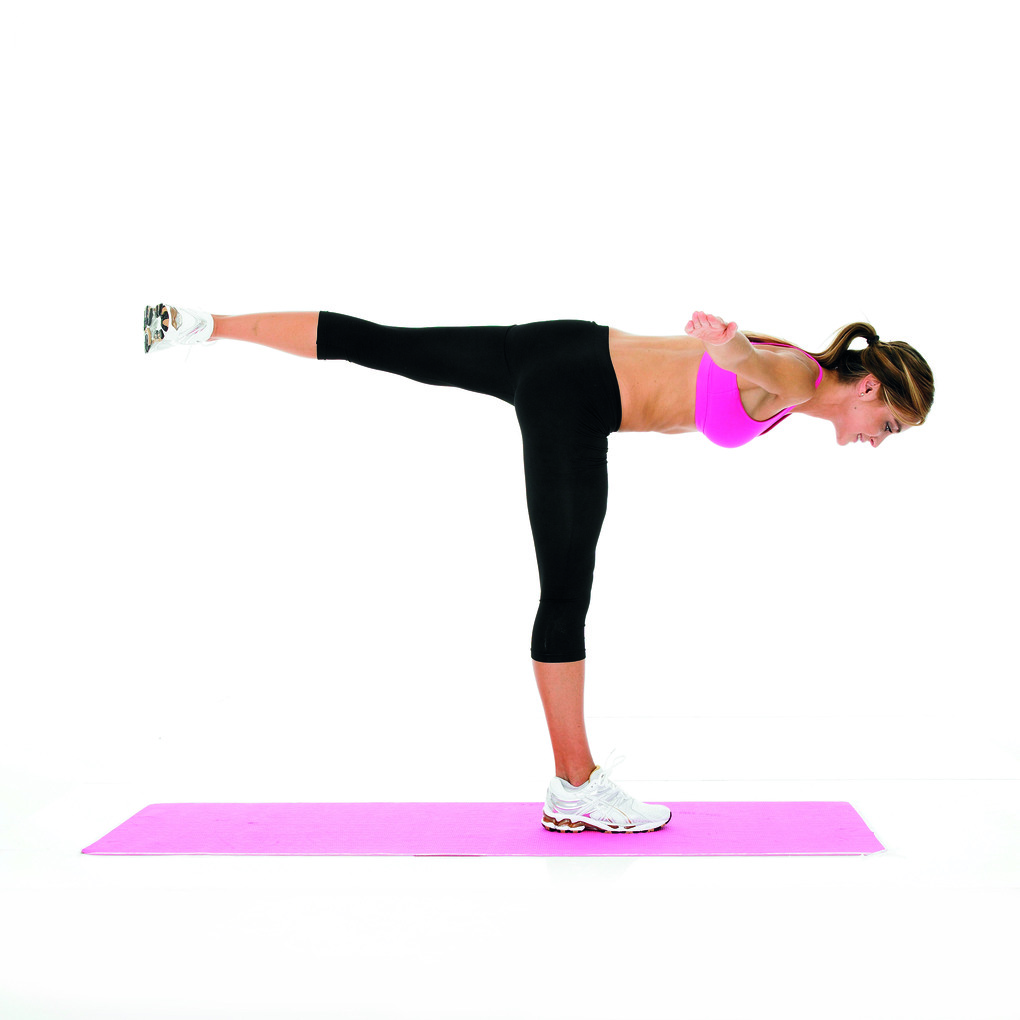
6. T-stance
- Stand up tall and place all your bodyweight on your right leg.
- Extend your left leg backwards and your arms sideways. This is the start position.
- Pivot your upper body forwards, and your left leg backwards.
- Aim for a straight line between your head, right hip and left foot.
- Hold the position for 5 seconds.
- Return to the start position. Complete set number of reps and repeat on other side.
Words: Beth Precious | Images: Shutterstock

